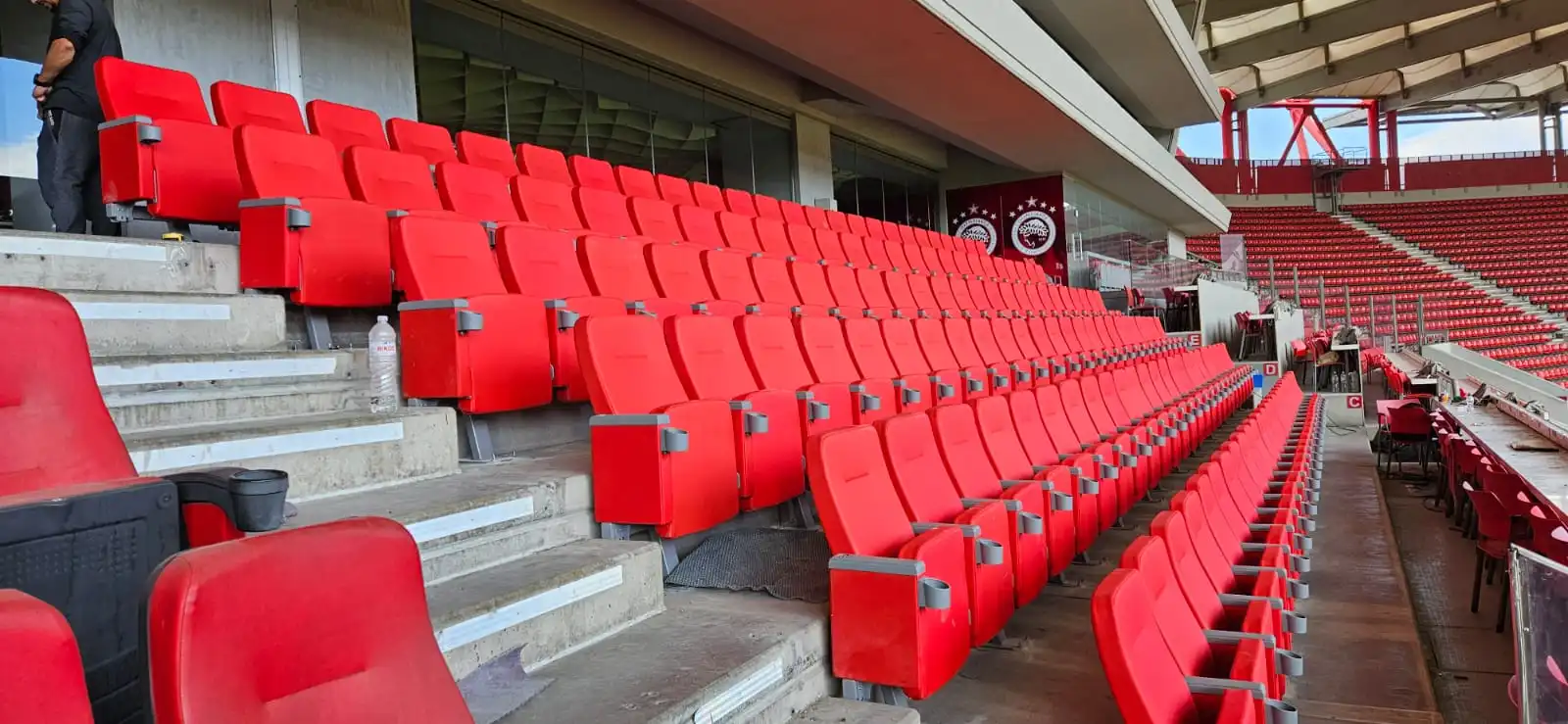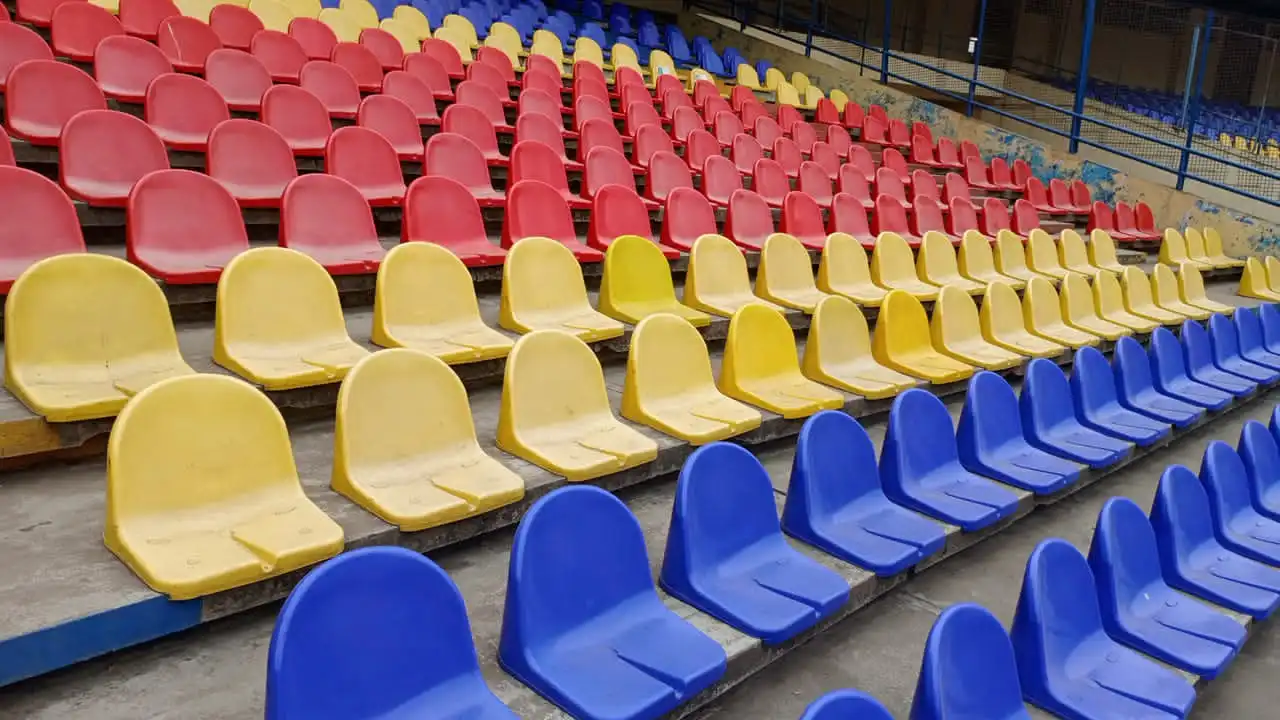Global Stadium Seating Manufacturer
Stadium Seating Manufacturers: Engineering the Future of Global Sports Venues
In a world where stadiums have become architectural landmarks and cultural icons, stadium seating manufacturers stand at the core of innovation. They shape not only the way fans experience live events but also how architects and engineers design large-scale venues. From Europe to the Middle East and beyond, modern manufacturers are transforming seats into smart, sustainable, and spectator-focused solutions that define the stadiums of the future.

The Evolution of Stadium Seating Manufacturing
Gone are the days when stadium seats were simple molded plastic shells. Today, manufacturing involves a blend of ergonomic design, material science, and digital engineering. Modern producers now focus on:
Advanced polymers and recyclable composites for durability and sustainability.
Ergonomic contours that enhance comfort during long events.
Fire, UV, and impact resistance that meet global safety standards.
Modular structures allowing quick installation and easy maintenance.
These innovations ensure that stadium seating systems are not only functional but also integral to a venue’s design language and long-term performance.
Global Trends Driving the Stadium Seating Industry
The worldwide demand for high-quality seating continues to rise as cities invest in sports and entertainment infrastructure. Key trends shaping the market include:
Sustainability-first production, using eco-certified materials and low-emission processes.
Smart seating technology, including digital seat numbering and integrated ticketing.
Customization, with color schemes and branding reflecting each team’s identity.
Hybrid and VIP seating zones, balancing comfort with revenue generation.
These developments demonstrate how the stadium seating industry is evolving to meet both functional and experiential expectations.
The Manufacturing Process: Where Precision Meets Performance
Producing stadium seating requires a balance between industrial precision and human-centered design. Each stage of production contributes to the overall reliability and comfort of the final product:
Design and Prototyping: CAD modeling ensures precise geometry and ergonomic accuracy.
Material Selection: UV-protected plastics, reinforced steel, and recyclable composites are carefully chosen.
Injection Molding and Testing: Seats undergo stress, fire, and weather resistance tests.
Assembly and Quality Control: Every component is evaluated for consistency and safety before shipment.
This meticulous process ensures that stadium seating can withstand years of intense use while maintaining visual appeal and comfort.
Regional Leadership and Global Expansion
Leading stadium seating manufacturers are emerging from regions with strong industrial infrastructure, such as:
Europe, where sustainability and design excellence set global benchmarks.
Turkey, offering high-quality manufacturing at competitive costs for both local and export markets.
Asia and the Middle East, where large-scale sports investments drive innovation and demand.
By combining local expertise with international standards, these regions are redefining global stadium infrastructure.
Price-Performance Balance: The Industry’s Competitive Edge
Stadium seating manufacturers are constantly optimizing cost, quality, and durability to remain competitive. The best manufacturers provide:
Scalable production for projects from 5,000 to 80,000 seats.
Affordable materials that do not compromise on safety or longevity.
Flexible customization for color, branding, and layout.
After-sales service that extends product lifespan through maintenance support.
This strategic balance makes top manufacturers the preferred choice for both national and international venue projects.
The Future of Stadium Seating Manufacturing
The next decade will mark a transformation in how seating is designed, produced, and used. Future innovations will include:
AI-powered ergonomic modeling for personalized comfort.
Carbon-neutral manufacturing to meet sustainability goals.
Smart sensors to track seat usage and maintenance needs.
Fully modular designs for easy upgrades and venue flexibility.
As fan expectations and event technology continue to evolve, manufacturers will remain at the forefront — merging creativity with engineering to redefine the spectator experience.

Conclusion
Stadium seating manufacturers are the invisible architects of modern sports experiences. Through innovation, sustainability, and precision engineering, they ensure that every fan from the front row to the upper stands — enjoys the perfect balance of comfort, safety, and excitement.
The future of stadium design depends on their ability to think beyond the seat itself to create sustainable, intelligent, and emotionally engaging spaces that unite people through sport, culture, and design excellence.
Created By : Monseat

